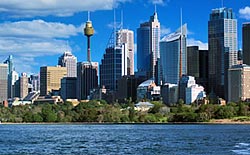Sydney Typesetting Service for Japanese

If you have an InDesign file that requires translation from English to Japanese or from Japanese to English, we can translate and typeset the translation for you within the InDesign files. Besides InDesign files, we accept Illustrator, Photoshop, Powerpoint or any other popular file format.
For larger files, you may use file-sending services such as yousendit.com or wetransfer.com.
Choose our Japanese Typesetters
- Typesetting of Japanese text by experienced Japanese typesetters
- Huge range of foreign language software and fonts by our Japanese typesetters
- Output to your desired format
Use this form to attach your files and send to us for a free quote.
Japanese Translation and Typesetting
Where a program cannot directly take the fonts of a particular language, typesetting is normally completed in Illustrator and placed back in the original design file as curved EPS files. We have considerable experience in larger multi-language typesetting projects where a consistent design and feel must be produced across several languages. This involves the coordination of Asian and European font styles, point sizes, leading, etc.
We provide professinal brochure translation and typesetting services no matter where you are based, contact us for a free quote.
More About The Japanese Language
Japanese has an extensive grammatical system to express politeness and formality.
The Japanese language can express differing levels in social status. The differences in social position are determined by a variety of factors including job, age, experience, or even psychological state (e.g., a person asking a favour tends to do so politely). The person in the lower position is expected to use a polite form of speech, whereas the other might use a more plain form. Strangers will also speak to each other politely. Japanese children rarely use polite speech until they are teens, at which point they are expected to begin speaking in a more adult manner.
Whereas teineigo (丁寧語) (polite language) is commonly an inflectional system, sonkeigo (尊敬語) (respectful language) and kenjōgo (謙譲語) (humble language) often employ many special honorific and humble alternate verbs: iku "go" becomes ikimasu in polite form, but is replaced by irassharu in honorific speech and ukagau or mairu in humble speech.
Most nouns in the Japanese language may be made polite by the addition of o- or go- as a prefix. o- is generally used for words of native Japanese origin, whereas go- is affixed to words of Chinese derivation. In some cases, the prefix has become a fixed part of the word, and is included even in regular speech, such as gohan 'cooked rice; meal.' Such a construction often indicates deference to either the item's owner or to the object itself. For example, the word tomodachi 'friend,' would become o-tomodachi when referring to the friend of someone of higher status (though mothers often use this form to refer to their children's friends). On the other hand, a polite speaker may sometimes refer to mizu 'water' as o-mizu in order to show politeness.
Most Japanese people employ politeness to indicate a lack of familiarity. That is, they use polite forms for new acquaintances, but if a relationship becomes more intimate, they no longer use them. This occurs regardless of age, social class, or gender.
Japanese Typesetter in Sydney

Sydney is the most populous city in Australia and the state capital of New South Wales. It is located on Australia's south-east coast of the Tasman Sea. As of June 2010, the greater metropolitan area had an approximate population of 4.6 million people. Inhabitants of Sydney are called Sydneysiders, comprising a cosmopolitan and international population.
The site of the first British colony in Australia, Sydney was established in 1788 at Sydney Cove by Arthur Phillip, commodore of the First Fleet as a penal colony. The city is built on hills surrounding Port Jackson which is commonly known as Sydney Harbour, where the iconic Sydney Opera House and the Harbour Bridge feature prominently. The hinterland of the metropolitan area is surrounded by national parks, and the coastal regions feature many bays, rivers, inlets and beaches including the famous Bondi Beach and Manly Beach. Within the city are many notable parks, including Hyde Park and the Royal Botanic Gardens.1
With so many beaches and bays close to Sydney’s city centre, it’s no wonder that Sydneysiders choose to enjoy a summer holiday at home. You’ll find them starting the day with a run along a beach, taking a leisurely walk, going surfing or enjoying a coffee at a beachside cafe.
Enjoy some of the world’s most famous beaches, such as Bondi and Manly, with their unique combination of surfing, shopping and beachside dining. Or find your own patch of sandy paradise, from Tamarama to Coogee, Dee Why to Palm Beach.

